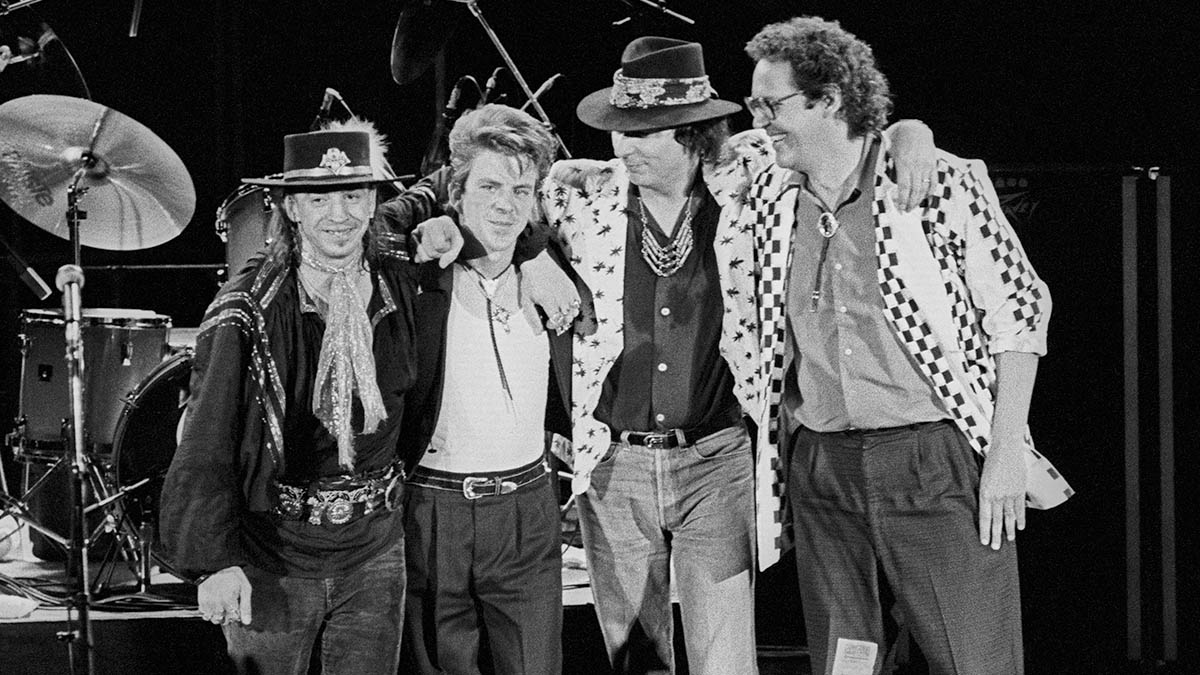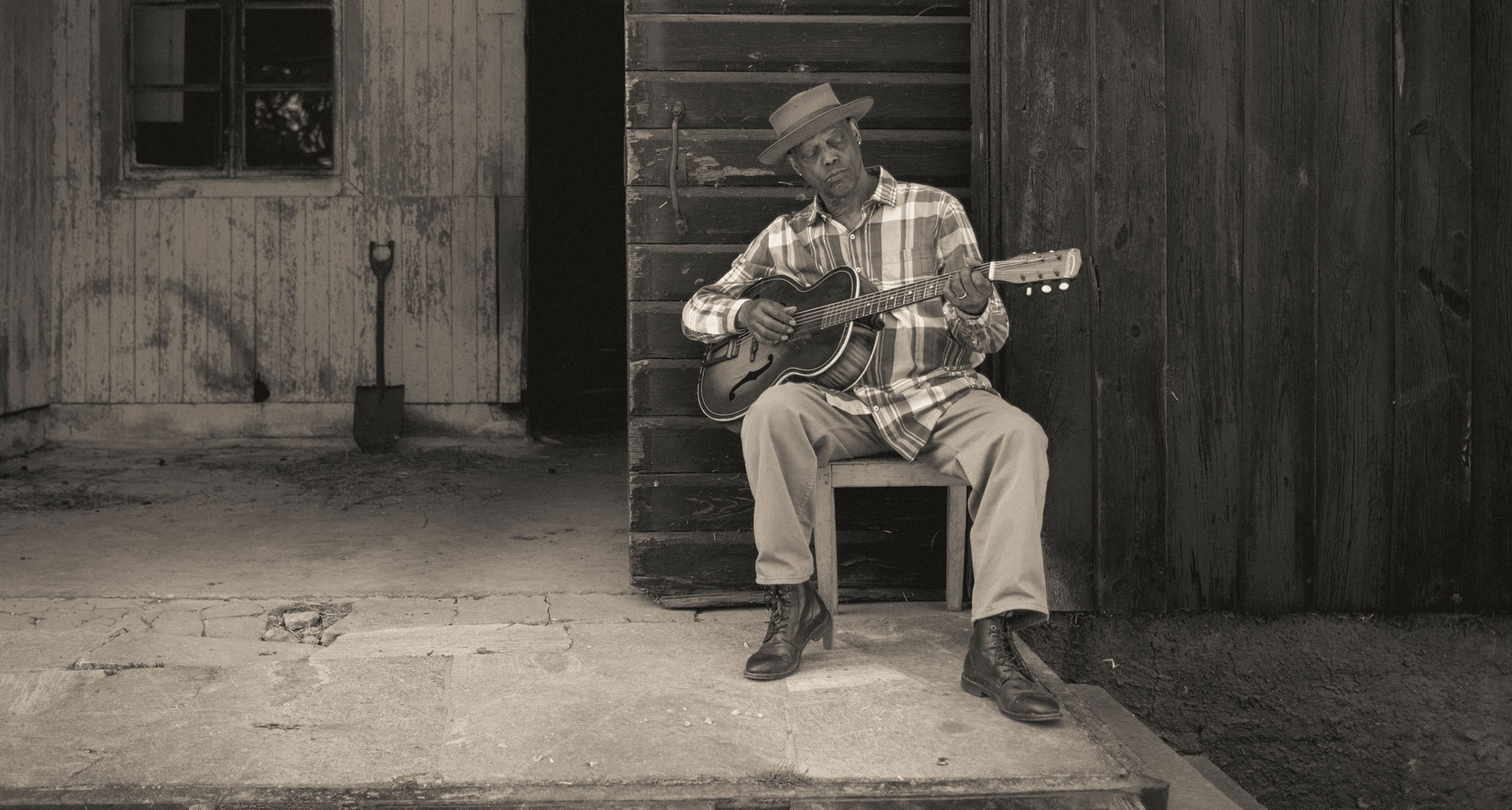“With those thicker strings he used, it was like he was in a battle, fighting them with his fingers”: How Stevie Ray Vaughan made Texas Flood
Texas Flood is a touchstone of blues guitar and Double Trouble drummer Chris Layton witnessed the magic first hand. He looks back on how SRV's Popeye strength and god-like tone made for a classic

In 1983, the guitar world changed forever with the release of Texas Flood, Stevie Ray Vaughan and Double Trouble's debut album and a wake up call for blues players everywhere.
Not since Jimi Hendrix had such a fully formed blues player made such an impact so quickly – SRV's tone and touch soon saw him tipped by the likes of Eric Clapton and David Bowie. Not bad for an album cut in two days.
In honor of its 40th anniversary, Total Guitar caught up with Double Trouble drummer Chris Layton, who shared his memories of the sessions, the gear and Stevie's remarkable strength…
Gear
“Stevie brought two guitars with him – he brought his ‘Number One’ Strat, that everyone always saw him playing, and he brought the old brown Strat he called ‘Lenny’. That was it for the sessions. He had a Fender Super Reverb and a Vibroverb, but when we got to Jackson Browne’s studio, Jackson said he had this combo that he really loved.
“He said, ‘Try it out, you might like it!’ And it was one of the early Dumbles. It was this combo with a tie-dye grill cloth. Jackson said, ‘A friend of mine started making these recently and ended up making me one!’ And he persuaded Stevie to plug into it.”
Strings
“Stevie’s hands were unbelievably strong! If you saw him without a shirt on, he’d be this thin, little-bodied guy, but his hands looked like they could crush concrete! I used to call him Popeye!
“With those thicker strings he used, it was like he was in a battle with them, almost fighting them with his fingers. Why didn’t he lighten up on the strings? I guess the gauge of those big strings would determine the tone, no matter who the player is, and give you a sound that thin strings just can’t get.
All the latest guitar news, interviews, lessons, reviews, deals and more, direct to your inbox!
“There’s no way a 37 low-E can sound like a 48 or whatever, and there’s no way an 8 high-E can sound like Stevie’s 13. They just won’t ring in the same way. That was the method to his madness, being able to manipulate those strings.”
Tone
“Stevie was always be messing around, sometimes even playing just a simple single note over and over again. He’d tell me he was ‘searching for a better tone’. He’d say, ‘Without tone, there really isn’t anything!’
“I remember him saying, ‘All the people considered to be great players would start off with a really good tone before they had any licks or songs!’ It has to sound good first. And that’s what he was searching for. It’s almost like the notes and the songs came secondary!”
Recording
“To be honest, we didn’t really know what we were doing. We almost treated it like a show, as if we were on stage. If the take sounded good, we’d move on to the next one. What we did in that studio is what we played hours later across the road in a club. Stevie just plugged in and played. With the song Lenny, I remember he started fiddling around with the idea and then played it to me in its entirely.
“Where I come in on the song, I just naturally fell in there. He was shaking his head smiling and going, ‘Yeah, that’s it!’ That’s how we made music, mostly. We didn’t write it out and talk about it. It wasn’t like Sgt. Pepper. We just played through all the songs two times, some of them maybe three, and then it was done. It was as honest as music can get.”
Amit has been writing for titles like Total Guitar, MusicRadar and Guitar World for over a decade and counts Richie Kotzen, Guthrie Govan and Jeff Beck among his primary influences as a guitar player. He's worked for magazines like Kerrang!, Metal Hammer, Classic Rock, Prog, Record Collector, Planet Rock, Rhythm and Bass Player, as well as newspapers like Metro and The Independent, interviewing everyone from Ozzy Osbourne and Lemmy to Slash and Jimmy Page, and once even traded solos with a member of Slayer on a track released internationally. As a session guitarist, he's played alongside members of Judas Priest and Uriah Heep in London ensemble Metalworks, as well as handled lead guitars for legends like Glen Matlock (Sex Pistols, The Faces) and Stu Hamm (Steve Vai, Joe Satriani, G3).

